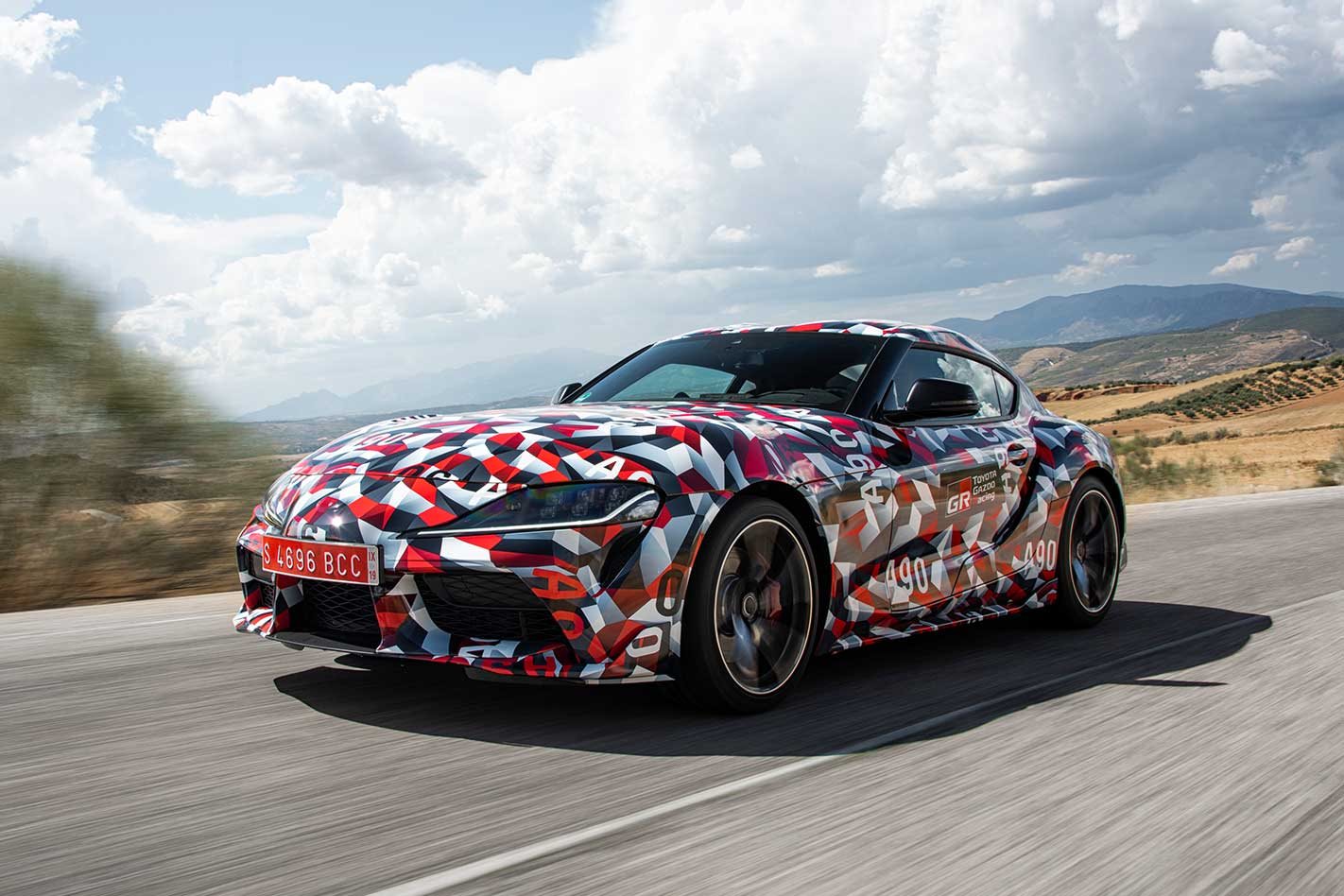Well this is the new Toyota Supra. What can I tell you? More like: what am I still unable to tell you?
It’s still dazzle-camouflaged outside. Inside it’s carpeted like someone’s skinned Skippy and draped him over the dashboard. It’s still eight months away from production and therefore still in prototype form. I’m accompanied by a minder whenever I go near it. And they’ll barely tell me a single flipping specification.

They insist the numbers don’t matter. (Which begs the question: why not just tell us, if they’re so unimportant?) What only matters at the moment, they say, is the way it drives, the way it makes you feel. And this, I’m thrilled to report, I can tell you.
I drove it, quite a lot and quite fast by the standards of events that only have four prototype cars available. It’s yet another painful plink in the agonising drip-feed of Supra information that, let’s not forget, began in 2012 when BMW and Toyota announced they were going to work together. Does Toyota really need seven years to build a car?
Only this much is confirmed of what we know: the Supra has a lower centre of gravity than an 86, despite having a 3.0-litre straight-six engine, driving the rear wheels through an eight-speed automatic gearbox (BMW/ZF respectively); while a BMW M Active limited-slip differential sits at the back axle. As with BMW’s Z4, the weight distribution will be 50:50.
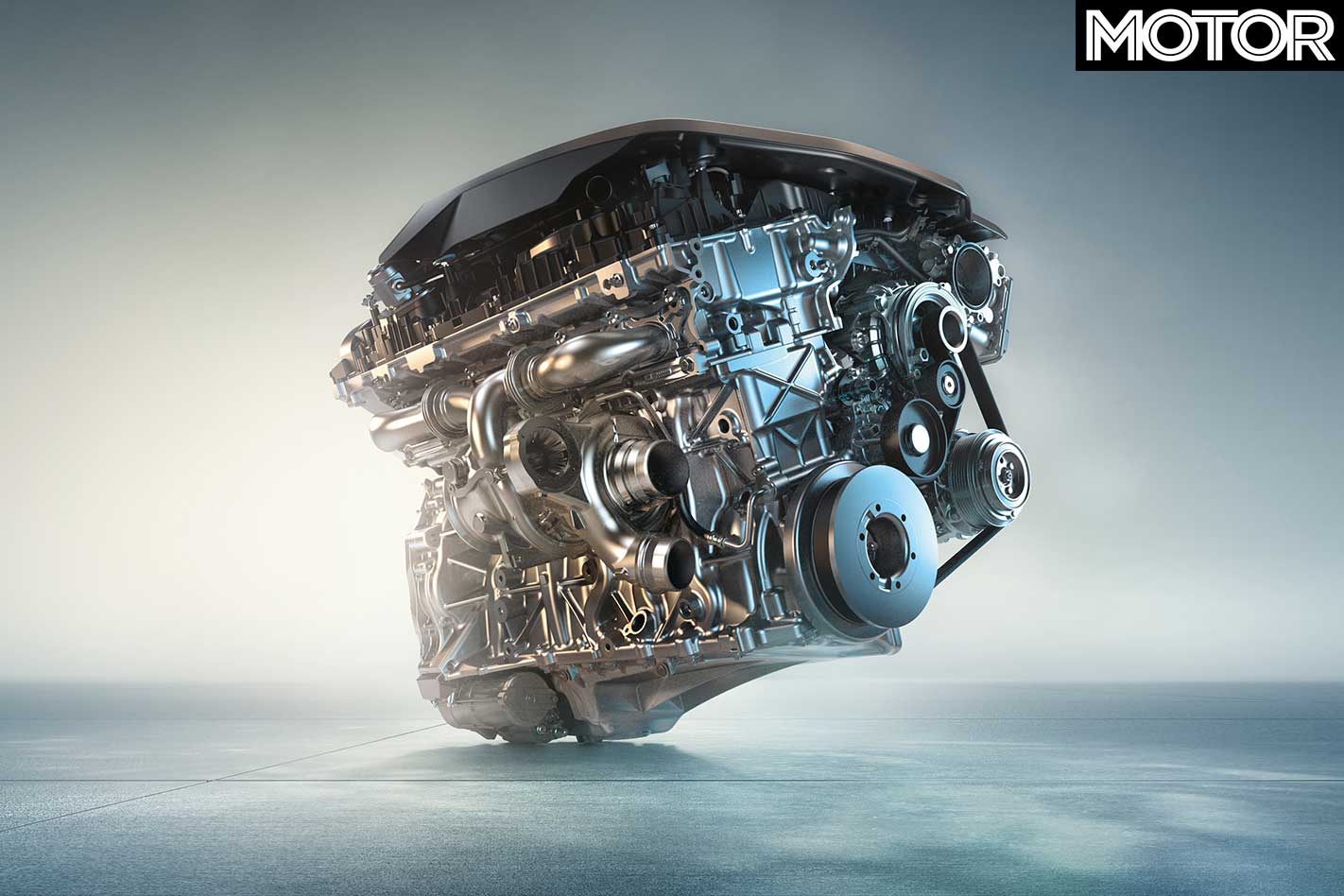
I still can’t tell you the exact power, but 250kW sounds about right, 475Nm too, and the kerbweight is likely 1500kg. The body rigidity, despite being a blend of steel and aluminium, is as stiff as a Lexus LFA’s carbon one. The wheelbase is around 2440mm and the tracks approximately 1600mm.
There will be faster and, I suspect, slower versions of this car later, to make the sums add up for Toyota, so the slow release of info will go on even after it goes into production in May. You’ll see the final car, shorn of disguise, at Detroit motor show time in January.
Another thing to add to what we know: it’s good to drive.
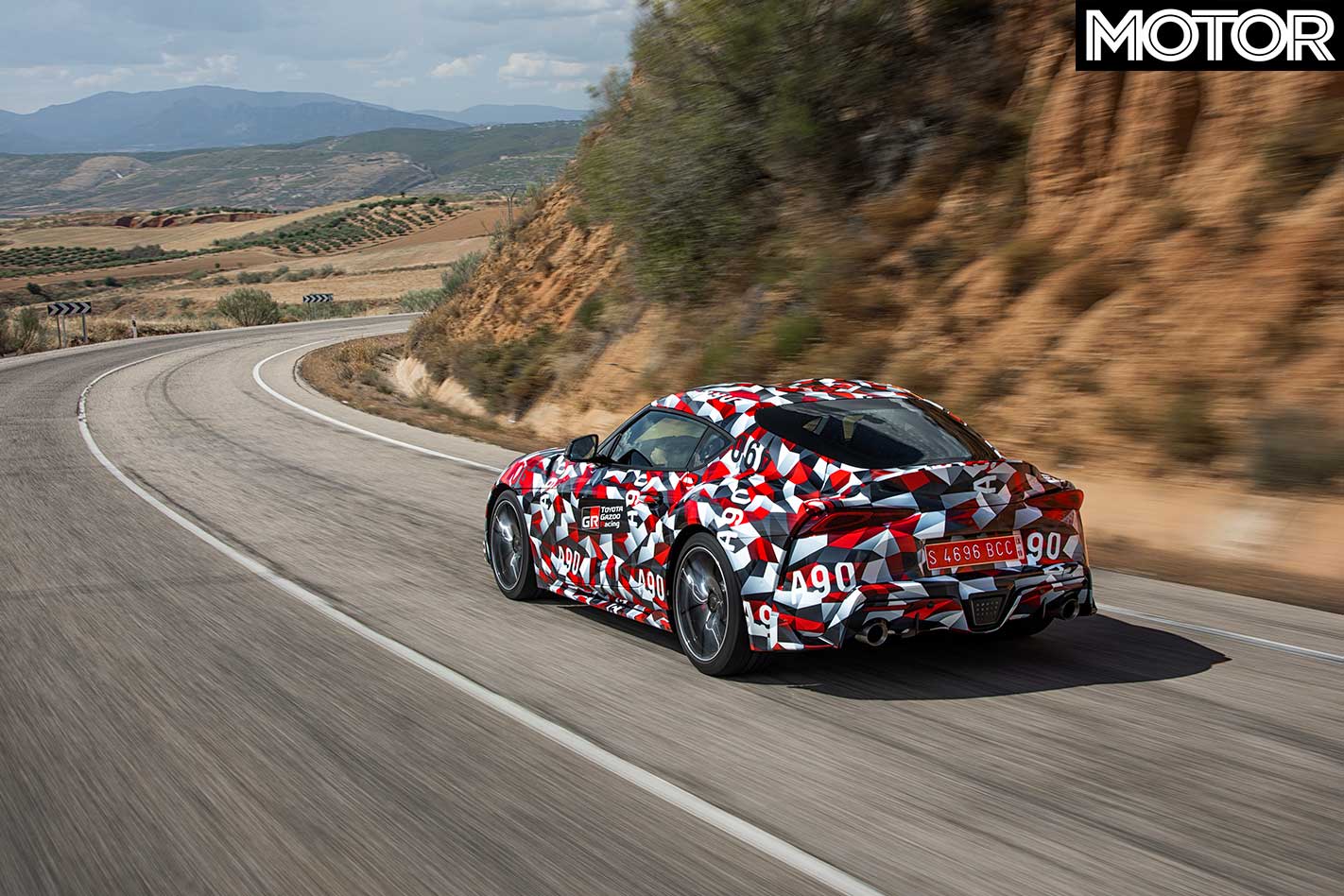
Our route is a two-hour loop from the outskirts of Madrid, so is partly in the city, partly on the motorway, partly on country roads, and then – goody gumdrops – arrives at a racetrack.
Because I’m sharing the drive with a colleague from another magazine, even though I’m contractually obliged to pretend there is no such thing, and because there’s always a minder in the Supra, sometimes one of us is following in an 86 while the other drives the Supra, which I mention for reasons I’ll come back to.
First, then, getting into the Supra. Despite the drapery inside you can sense it has is a BMW-centric interior. The switchgear is BMW, the driving position is long and straight, the gearstick is BMW’s. Does that matter? I doubt it.
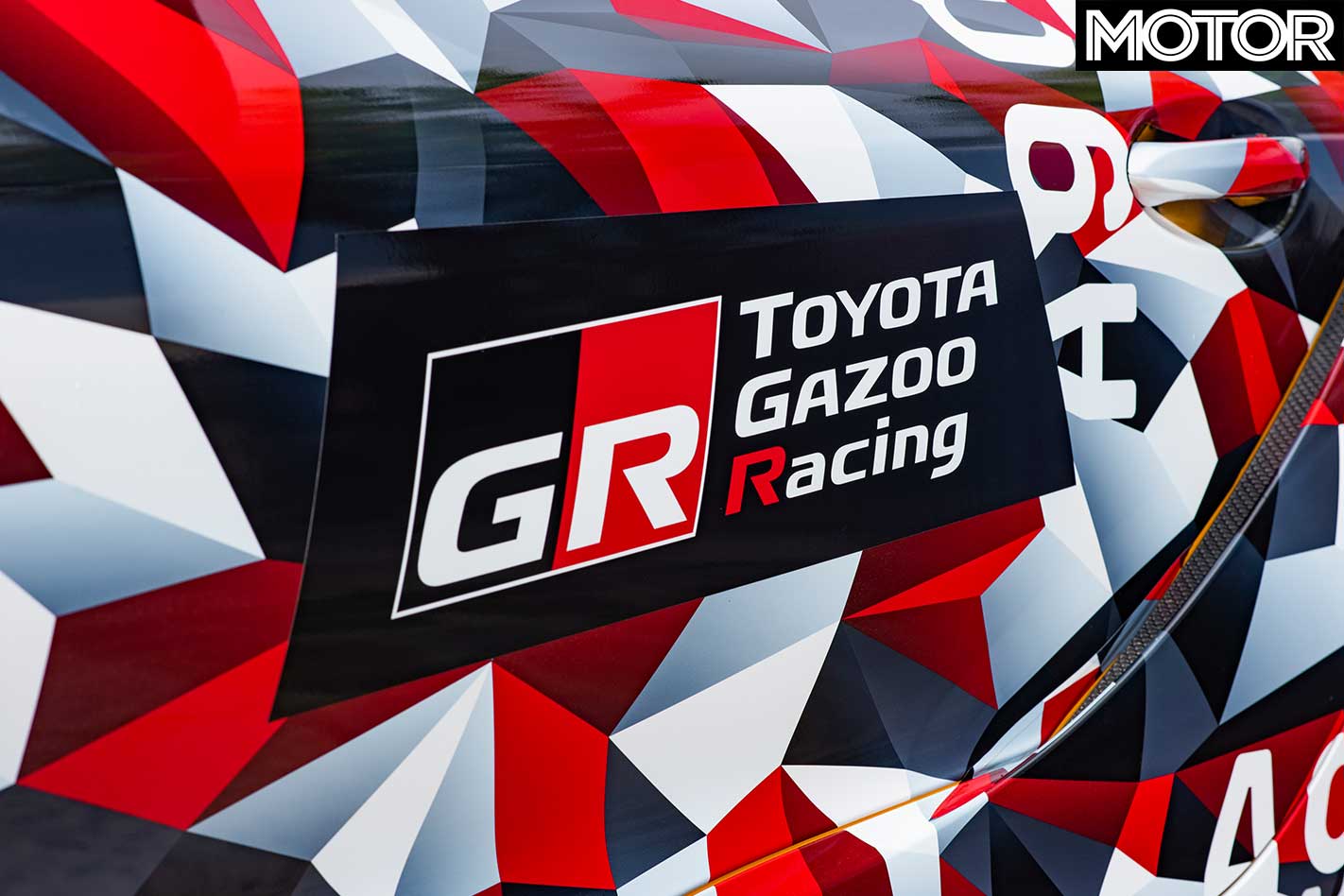
The iDrive multimedia system is better than Toyota’s alternative and there’ll surely be a Toyota face on that anyway, as there is on the instrument binnacle, while the steering wheel is thinner of rim than BMW uses, and round. Praise be on both of those counts.
You sit low, peering through a letterbox windscreen, with a high window line and the curved bonnet spearing off into the distance. No idea whether it is (it probably is), but it immediately feels bigger than, say, a Porsche 718 Cayman, whose corners are easier to place, owing to the visibility. You are aware, at once, where the Supra’s engine is.
It’s a refined engine and drivetrain, though. If there’s work to still be done on the calibration, it’d be news to me. A six is always smooth, but a BMW six, turbocharged here, is incredibly so.

Step-off is almost imperceptible and the Supra, even in standard drive mode, is unencumbered by the response modern autos sometimes give, where they feel like they’re trying to lug things out from too low revs. The stop-start system wasn’t functioning, which probably helps, mind.
Push a sport button and the throttle and gearbox response sharpens, but there are gearshift paddles, so if you want a quicker response, it’s probably more rewarding to take control yourself. There’s no word on a manual ’box yet; but Toyota would like one.
The Supra rides well, too, better than a BMW M4 while on the same size tyres: bespoke Michelin Pilot Super Sport rubber of 255/35 R19 at the front and 275/35 R19 at the rear. Passive dampers will be standard, but adaptive dampers were fitted to the cars we tried.
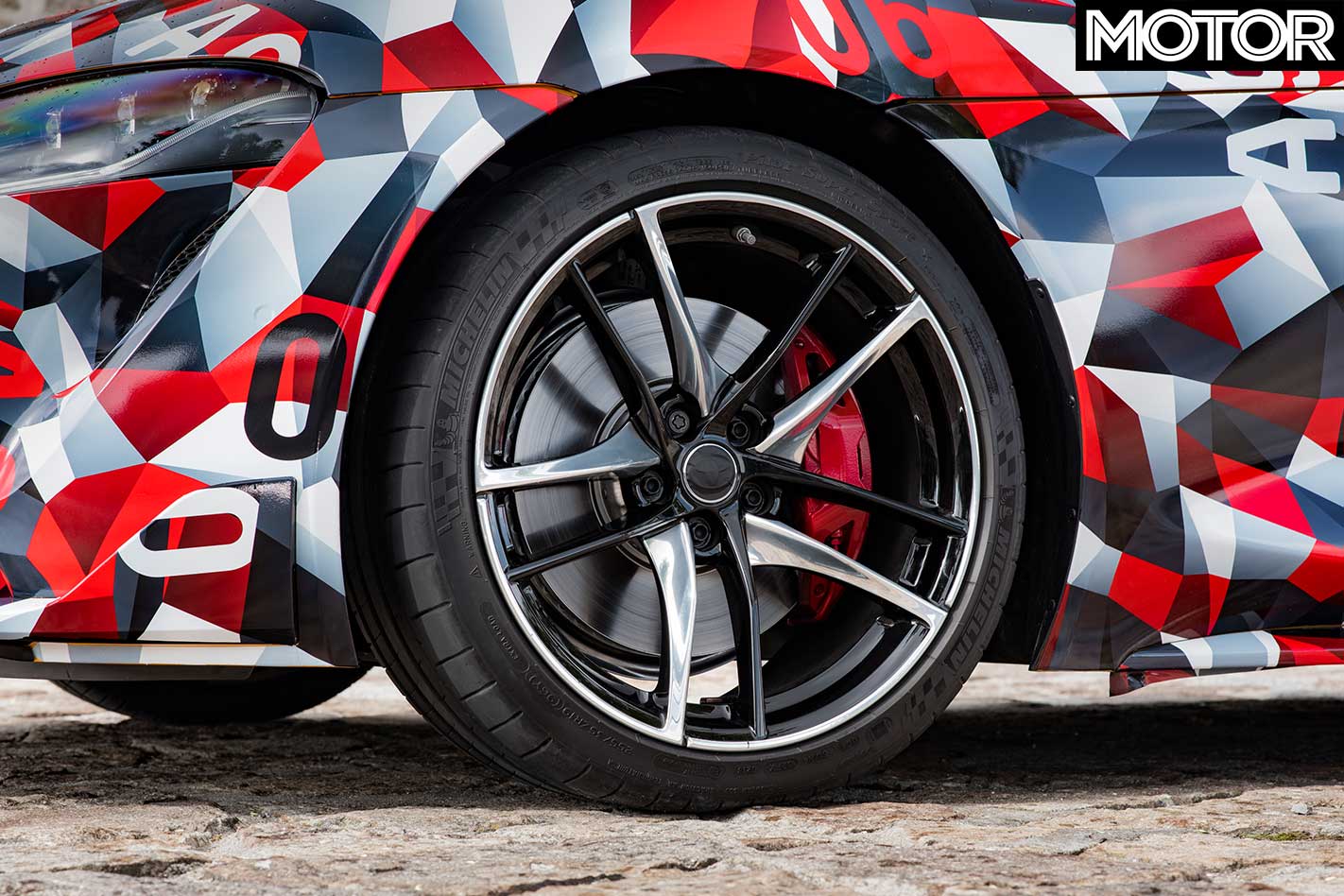
These, too, firm up via the sport button, as does the steering weight, though in regular daily driving there’s no need: the underlying compliance is welcome, but there’s no sense that the body weight is getting away from it.
The Supra feels like a stable, well-rounded sports coupe. Its engineers say they did 90 per cent of its development work on the road, and I think it shows. In town, on the motorway, it’s mature in a way that, say, a BMW M2 Competition or Alpine A110, perhaps even a Cayman, are not.
It’s only when you get onto a country road, then, that you start to push the boundaries of the standard suspension setting’s limits. The steering is smooth, progressive, sharper off of straight-ahead than some front-engined coupes. Presumably it is to give an extra sense of agility that, compared to a 718, the Supra simply can’t have.

Body roll builds progressively, but this is where you want the dampers firmed. Without them like that, as you get back on the throttle and the differential begins to worry about acceleration, you feel the body’s mass shifting in a way you don’t think you would in a Cayman.
With dampers tightened that much is alleviated, with not too much loss in compliance, and there’s a pleasing, reassuring balance. Hints of understeer on the way in, likewise oversteer on the way out, not unlike, say, an Aston Martin Vantage only a bit lighter. A BMW M2 with both more compliance and control (or an M2 Competition with more compliance).
Swapping into and following in an 86, though, you’re reminded of the advantages that minimal mass gives you. Sure, the 86’s engine is wheezy, but working it hard you can carry speed and enjoy delicate fingertip steering responses denied in the bigger car. It’s a reminder of how exceptional the 86’s chassis is; which I suspect wasn’t the objective of the exercise.
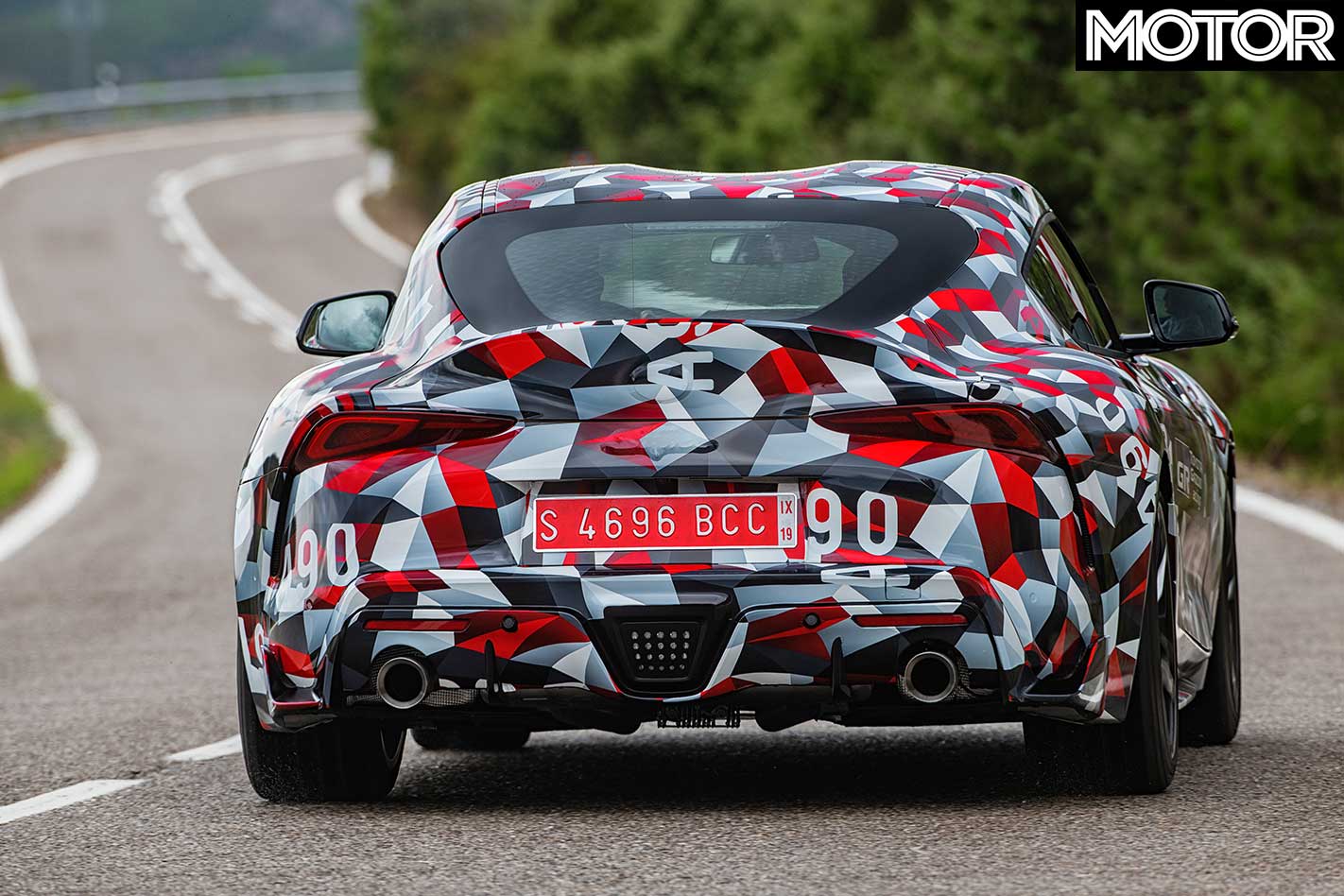
But still, there are other things a Supra can do. The engine’s extremely sweet, smooth, broadly responsive but happy revving. In Sport mode a flap opens in the exhaust and Toyota says there’s more work to do on the induction noise, probably via sound tubes off the engine – so real, rather than fake noise. But unlike a Cayman you’re happy to let it rev and sing, or sit at high revs pre-overtake.
And it’s clearly a chassis that can handle more power. Nowhere is that more evident than on a circuit where, Sport mode engaged, the Supra displays the same balance as on the road, only enhanced.
The suspension maintains good control but with serious compliance over bumps or kerbs; where those would thump through in an M2 Competition, the Supra glides across, as a Cayman might. It doesn’t rotate as willingly as a Cayman or, from my limited experience, an Alpine A110, but that’s not surprising given where the engine is.
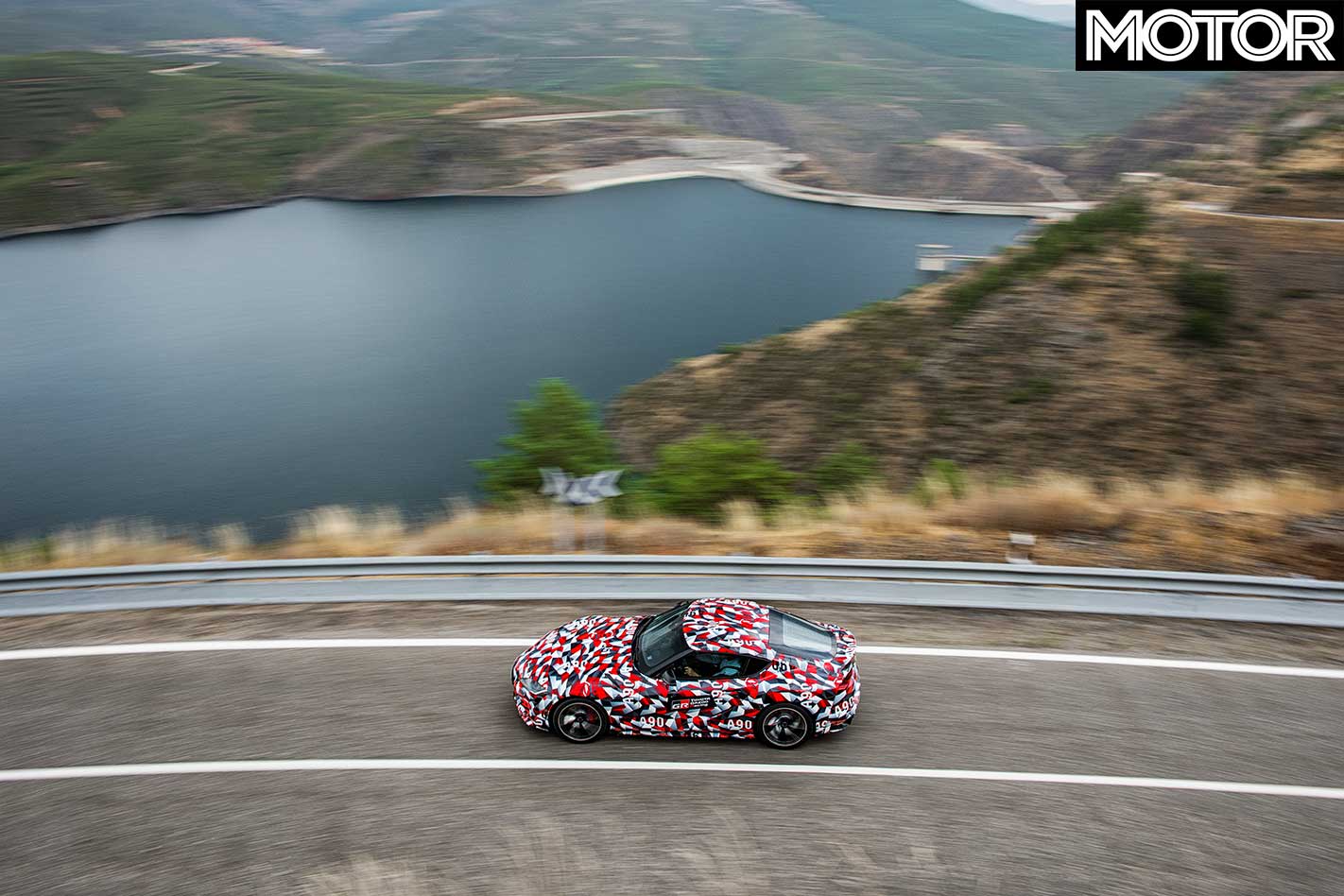
With stability control set to ‘have a little slip’ but not ‘off’, (the minder still alongside, see), you get to feel the balance: steering that’s smooth if not laden with feel, a hint of entry understeer, a hint of exit oversteer with the knowledge that you could have a lot more if given the opportunity. Some of my favourite-handling cars – an Aston V12 Vantage S, that 86 – have the kind of balance the Supra displays, albeit usually with more rawness.
But that’s fine. It is, in this spec, 90 per cent a road car and yet still happy on a hot circuit, being pushed hard without overheating its steel discs, offering more handling balance and playfulness, more reward, the more you push it.
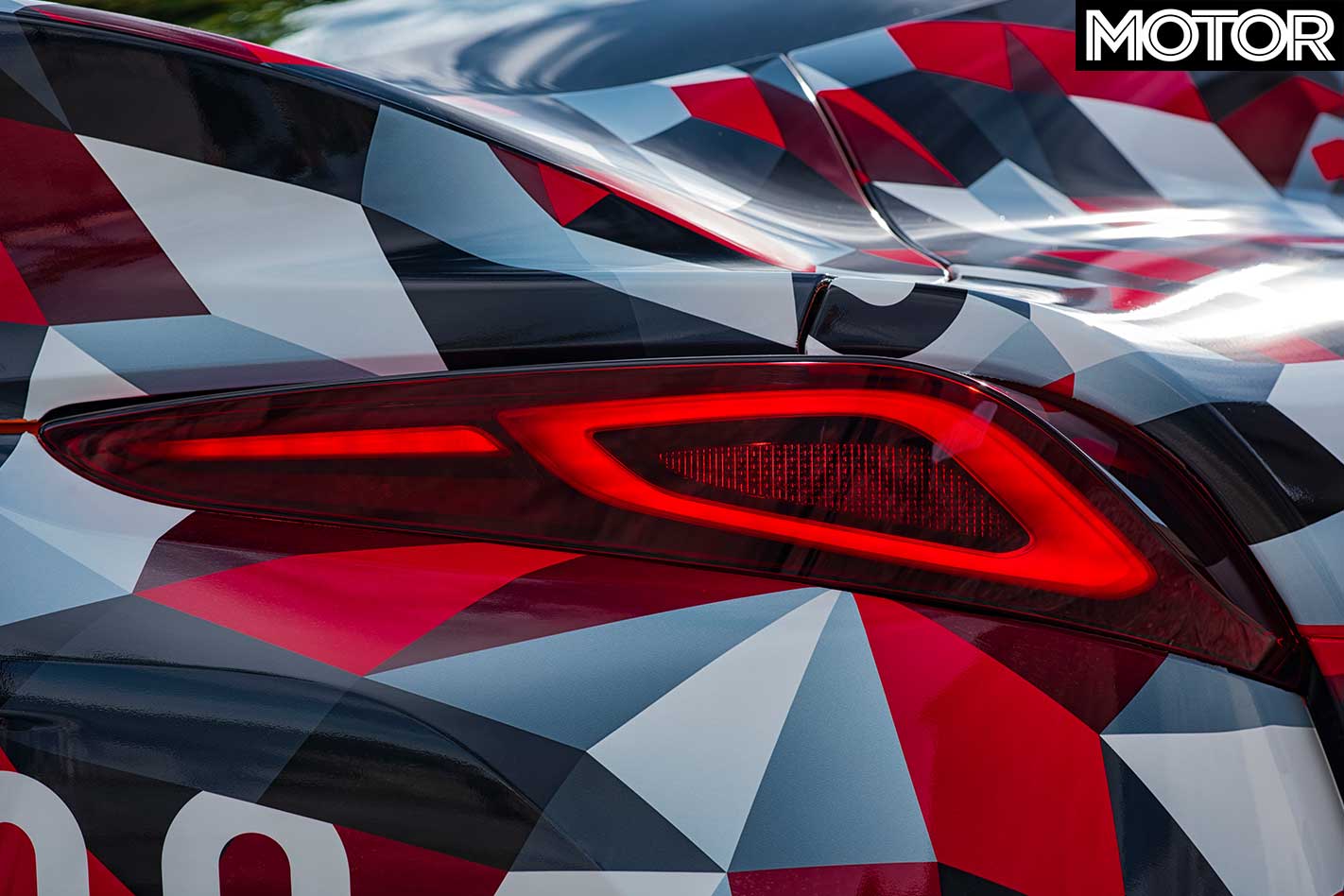
Toyota has taken a delicate path with the Supra; a road car that gives more when you ask for more and where an A110 or M2 Competition might give you more all the time, that’s no bad thing. In terms of daily maturity it’s closest, then, to a 718 Cayman. Curious. A few years ago a Cayman would have been seen as unbeatable. Now everybody wants a crack at it.
On this showing, Toyota is getting as close as anyone.
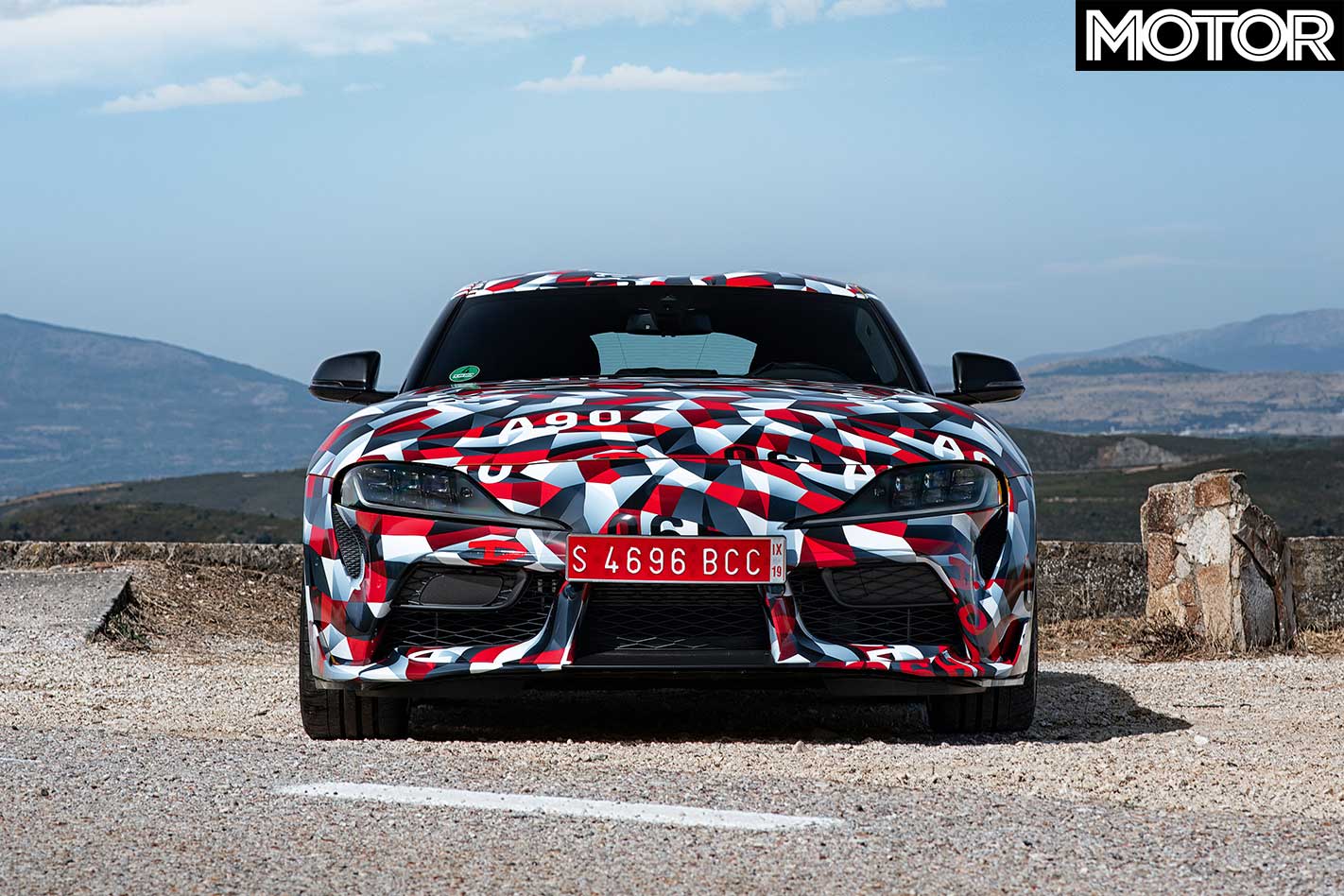
FAST FACTS 2019 Toyota Supra prototype
BODY: 2-door, 2-seat coupe DRIVE: rear-wheel ENGINE: 2998cc inline-6, DOHC, 24v, turbo POWER: 250kW (estimate) TORQUE: 475Nm (estimate) WEIGHT: 1500kg (estimate) TRANSMISSION: 8-speed automatic WHEELBASE: 2440mm (estimate) TYRES: Michelin Pilot Super Sport, 255/35 R19 (f); 275/35 R19 (r)
RATING: 4.5 out of 5 stars
Five reasons the B58 is the next great inline six
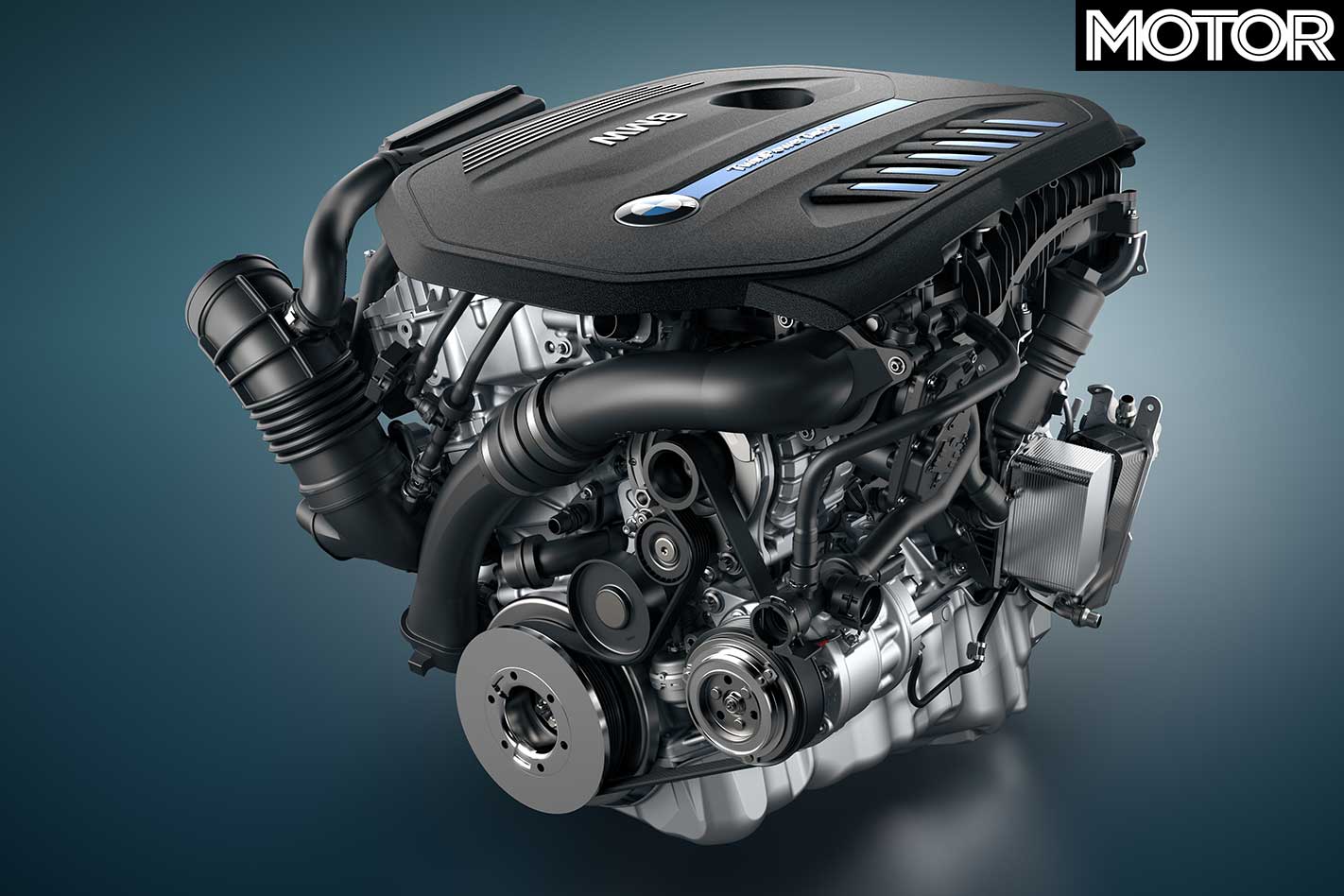
1 – The modular architecture with BMW’s three- and four-pot engines increases economies of scale, parts availability and value 2 – Its crankcase is stiffened and the crankshaft better balanced 3 – Its bores are plasma coated, which should strengthen the block for big power applications 4 – The turbo’s electronic wastegate helps spool times and overall throttle response 5 – The B58’s twin-scroll turbo is larger than the succeeded N55’s, increasing power while keeping good response

